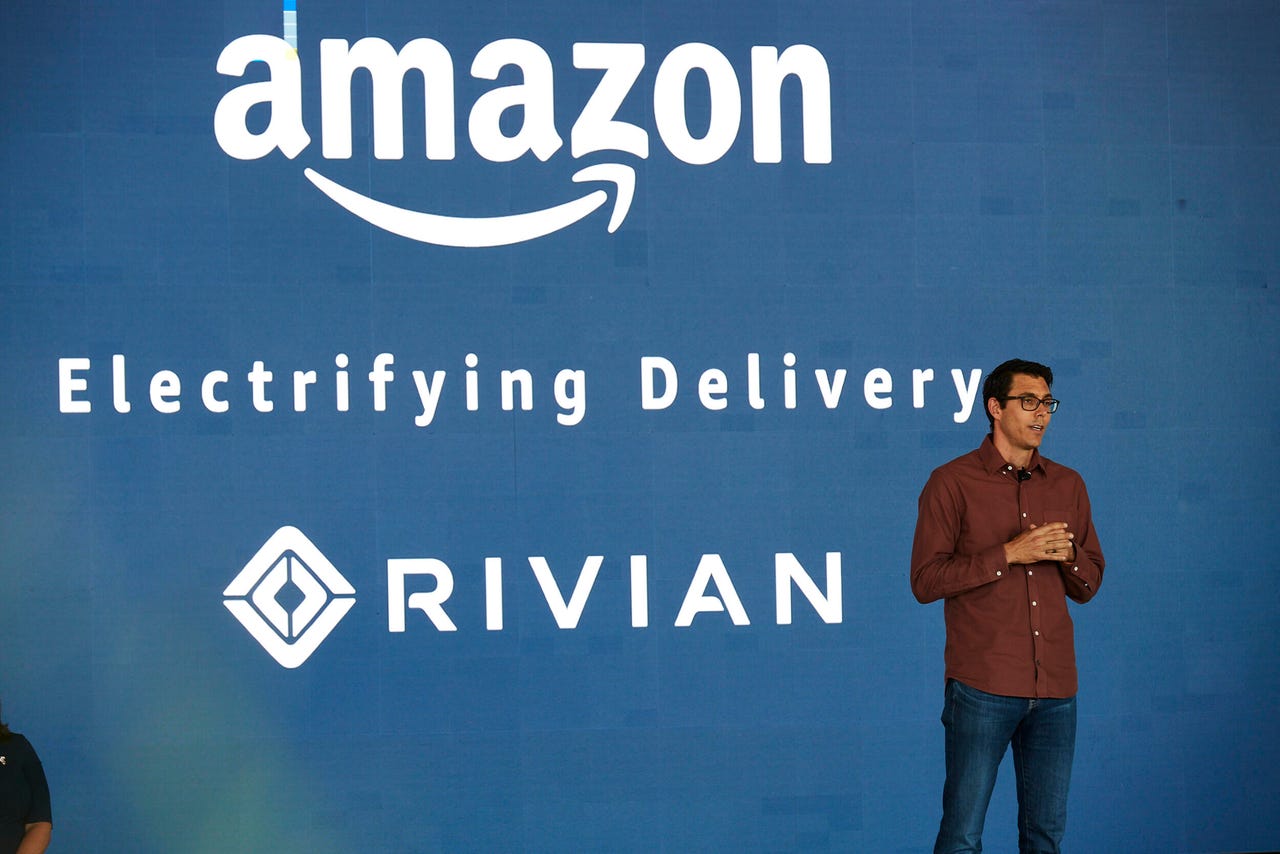
































Rivan CEO RJ Scaringe unveiled the custom electric delivery vehicle that his company is making for Amazon on July 21, 2022.
Getty/Mustafa HussainAmazon's recent rollout of Rivian electric delivery vehicles represented a milestone in the company's work toward reducing emissions. Starting in major cities, including Chicago, Dallas, San Diego, and -- no surprise -- Seattle, Amazon plans to have the vehicles in more than 100 cities shortly and will expand to more than 100,000 vehicles across the U.S. by 2030. While Rivian had the inside track as a company that Amazon has invested in, the EV company will have to feature more than just electrification to compete long-term in an industry where electrification will start to become the norm.
Looking for a tablet at a fraction of the cost of an iPad? Amazon has what you want.
Read nowIn addition to SUVs and pickups from electric pure-plays such as Tesla, established car companies are starting to play up larger electric vehicles. For example, Ford has been heavily advertising its electric F150 Lightning and GM recently made a splash around its electric Blazer SUV. Indeed, the Rivian rollout isn't Amazon's only play in its fleet electrification efforts. It has also committed to purchasing electric RAM delivery trucks from Stellantis (the company formed last year by the merger of Fiat Chrysler and French automaker PSA Group) and vehicles from Mercedes-Benz.
But the companies say that the Rivian trucks, designed with driver input, have other advantages in terms of safety and comfort. Deploying 100,000 of them over the remainder of the decade hints at Amazon's unique challenges and opportunities versus other big tech companies. Google and Microsoft are almost completely digital businesses. And while Apple must concern itself with supply chain emissions and the recyclability of its own products, few if any companies move as much stuff around the globe as Amazon while being able to target improvements through both its technological investments and distribution power.
Rivian electric delivery vehicles charge in Chicago at their official unveiling event on July 21, 2022.
Getty/Mustafa HussainFor example, according to Amazon's just-released sustainability report for 2021, it delivered over 100 million packages in Europe using a fleet of over 3,000 electric delivery vans and other zero-emission vehicles last year. And in the dense streets of Manhattan, the company delivered 30 million packages using cargo bikes and people on foot. And those packages are far less wasteful than they've been in the past as the company has implemented options such as programs that ship products without packaging, Climate-Friendly certifications for sustainably designed products, and even using machine learning algorithm improvements to pack products more efficiently into smaller boxes that allow for more efficient use of cargo storage.
But much of the quest to reduce the carbon footprint of transportation will take place via modes of transportation that are not seen by customers. For example, the company is a member of an industry group seeking to drive the adoption of sustainable aviation fuel and helped create another to advance zero-emissions technologies and fuels for use in shipping vessels. And given the greenhouse gas emissions of aviation, it's also investing in companies such as ZeroAvia, which is developing hydrogen-electric powertrains for jets, and Beta Technologies, one of several startups developing electric Vertical Takeoff and Landing (eVTOL) aircraft. All told, Amazon's$2 billion Climate Pledge Fund has invested in 18 companies, adding five since the end of 2021.
As we're not yet zipping around the skies in electric flying Ubers, the cumulative impact of these kinds of advancements will take time to be fully realized. While the company continued to make improvements to its Scope 2 (from purchased electricity) emissions in 2021, it still saw significant increases in its Scope 1 (from direct operations) and Scope 3 (from indirect sources) emissions, which typically represent the lion's share of a company's carbon footprint.
The increases come during a period when Amazon doubled the fulfillment center network and points to a metric called carbon intensity used to assess carbon footprints in fast-growing entities. It will have plenty of company on its quest to improve on those numbers. The company's promise to be a net-zero business by 2040 forms the central tenet of The Climate Pledge, a group Amazon co-founded that now includes over 300 organizations that have pledged to achieve the milestone by 2040, 10 years before The Paris Accord deadline.
 Hot Tags :
Innovation
Transportation
Hot Tags :
Innovation
Transportation